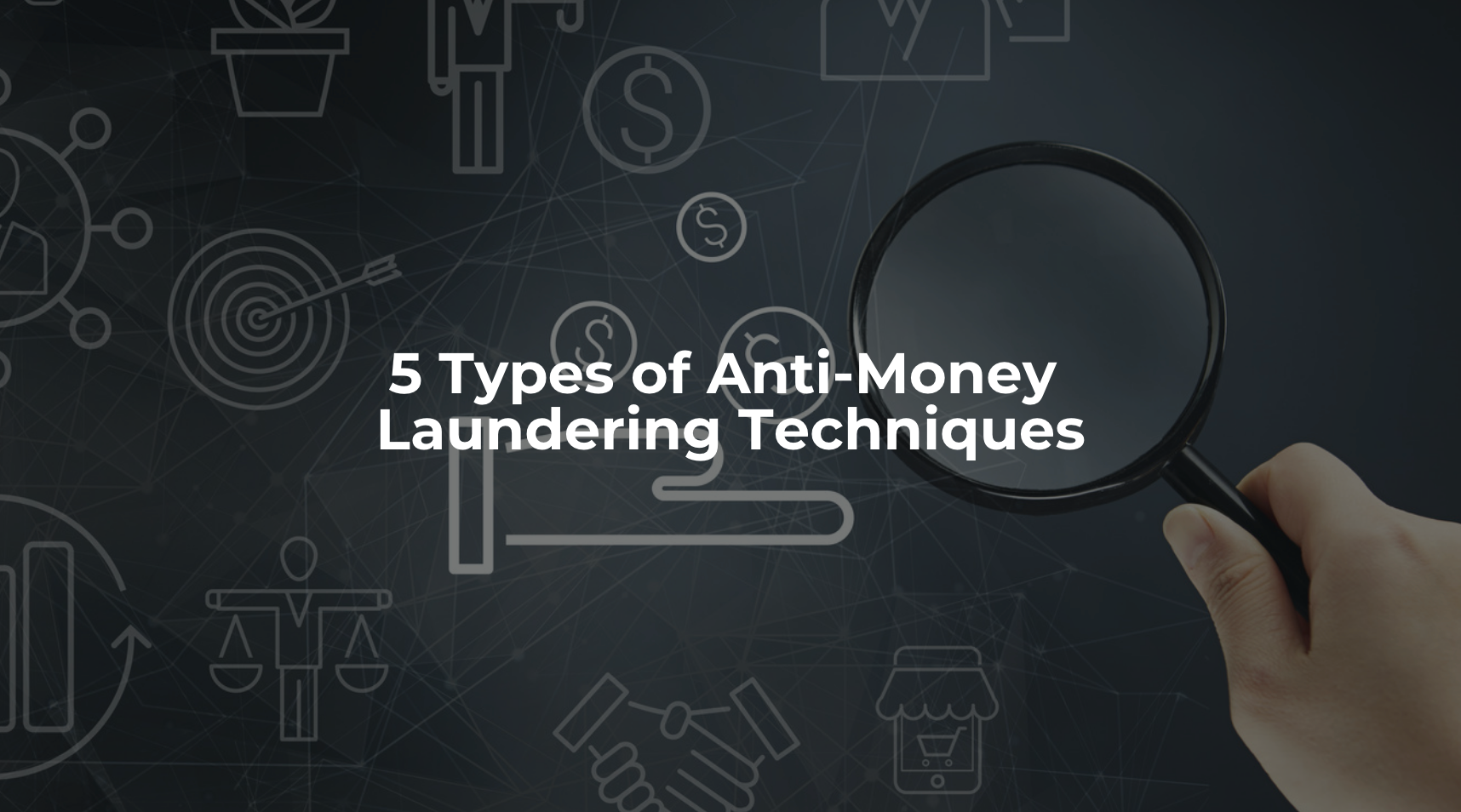Money Laundering Meaning and Global Implications
Money laundering refers to the process of concealing the true source of funds obtained through illegal activities, such as drug trafficking, corruption, or fraud. Its impact is felt worldwide, affecting financial systems, undermining trust, and enabling criminal enterprises. Businesses must understand the gravity of this issue and actively participate in anti-money laundering (AML) efforts.
Businesses face substantial risks when exposed to money laundering activities. These risks include legal penalties, reputational damage, and financial losses. By implementing robust AML measures, organizations can safeguard their operations, protect stakeholders, and contribute to a safer global economy.
Understanding Types of Money Laundering
To effectively combat money laundering, businesses need to recognize the various methods employed by criminals. Let’s explore some common types:
Placement
- Cash Smuggling: Criminals physically introduce large amounts of cash into the financial system by depositing it in banks or purchasing assets.
- Structuring (or Smurfing): Funds are broken down into smaller transactions to avoid suspicion. These smaller amounts are then deposited separately.
- Trade-Based Money Laundering: Criminals manipulate trade transactions (e.g., over- or under-invoicing) to move illicit funds across borders.
Layering
- Complex Transactions: Criminals create intricate financial transactions involving multiple accounts, jurisdictions, and intermediaries to obscure the money trail.
- Digital Layering: In the digital age, criminals exploit online platforms, cryptocurrencies, and electronic transfers to layer funds.
Integration
- Investment in Legitimate Businesses: Criminals invest illicit funds in legitimate ventures, making it difficult to trace the origin.
- Real Estate: Purchasing properties using dirty money provides a veneer of legitimacy.
- High-Value Assets: Criminals acquire luxury items (art, jewelry, etc.) to integrate illicit funds.
Global Punishments for Money Laundering
Money laundering is a global issue that governments and international organizations are working tirelessly to combat. As a result, there are various types of global punishment for money laundering, ranging from monetary fines to imprisonment, depending on the severity and scale of the crime.
Monetary fines are the most common type of global punishment money laundering perpetrators face, with some fines reaching into the billions of dollars. These fines are typically levied against financial institutions found guilty of breaching anti-money laundering regulations.
In addition to fines, imprisonment is another form of punishment for money laundering. The length of the sentence varies widely based on numerous factors, including the amount of money laundered, the level of knowledge and involvement in the crime, and the jurisdiction in which the case is tried.
Certain cases may also result in company closure or revocation of operating licenses, causing significant repercussions for businesses. These actions underline the seriousness of money laundering offences and the considerable effort put into combating them globally.
The implications of these punishments extend beyond the primary perpetrators. Businesses that fail to comply with regulations or do not take appropriate steps to prevent money laundering activities can also face hefty fines, reputational damage and in extreme cases, closure. This further underscores the necessity for businesses to understand and implement effective anti-money laundering measures.
Anti-Money Laundering Measures
In light of the severe global punishments for money laundering, and the potential reputational damage associated with it, adopting effective anti-money laundering (AML) measures should be a priority for businesses, particularly those in the financial sector.
Anti-money laundering refers to a set of procedures, laws, and regulations designed to stop the practice of generating income through illegal activities. The types of anti money laundering strategies utilized by businesses can vary greatly depending on their size, industry and the regulatory requirements they are obliged to follow.
One fundamental aspect of an effective AML program is having a comprehensive customer due diligence (CDD) process in place. This involves verifying customers' identities, understanding the nature of their businesses, and monitoring their transactions for any suspicious activities.
Another critical strategy is employee training. Regularly training staff to understand the various forms of money laundering and how to detect potential red flags can significantly mitigate the risk of illegal activities.
Regular auditing is also an essential part of a robust AML program. Audits should not only ensure compliance with all applicable regulations but also check that all the procedures put in place are working effectively to detect, prevent and report potential money laundering activities.
Furthermore, businesses should consider investing in technology that can aid in detecting and preventing potential money laundering activities. This can include AI and machine learning algorithms that analyze transaction patterns and identify abnormal behavior, as well as software that automates the CDD process.
The Role of Technological Innovations in Anti-Money Laundering
As technologies continue to advance, they are playing an increasingly significant role in the fight against money laundering. Traditional approaches to detect and prevent money laundering have often been time-consuming and susceptible to human error. But with the advent of new technologies, the process has now become more efficient, accurate, and risk-averse.
In particular, artificial intelligence (AI) and machine learning (ML) have revolutionized anti-money laundering measures. These technologies can analyze vast amounts of transaction data in real-time, identifying patterns, irregularities, and potential risks that might be missed by humans.
Blockchain technology, known for its transparency and immutability, also has significant implications for anti money laundering. It can create a tamper-proof audit trail of transactions, making it easier to trace and detect suspicious activities.
Furthermore, data analytics and predictive modeling can help companies to identify potential risks and vulnerabilities before they become a problem. This proactive approach can save businesses significant time and money, while also protecting their reputation.
However, it's important to recognize that technology is only as effective as the rules and parameters that govern its use. Therefore, it’s crucial that businesses maintain a strong understanding of the types of money laundering they may encounter, and continuously refine their risk models accordingly.
In the following section, we'll introduce an AI-based fraud management solution by TrustDecision, demonstrating how technological innovations can be effectively utilized in anti-money laundering efforts.
TrustDecision’s AI-Based Fraud Management
As businesses grapple with the ever-evolving landscape of financial crime, TrustDecision emerges as a reliable ally, offering advanced solutions to combat fraud, manage credit risk, and ensure compliance. Trusted by over 300 businesses worldwide, our AI-powered risk decision platform spans diverse industries, providing tailored solutions for businesses of all sizes.
Large transaction volumes, rapid fund transfers, and evolving fraud tactics pose significant challenges for businesses. Traditional rules and risk parameters often lead to false positives, affecting customer experience. To address these issues, TrustDecision offers a comprehensive fraud management solution.
Smart Surveillance and Automation
Our solution leverages swift data-driven artificial intelligence to detect unusual patterns in real time. Here’s how it works:
- Data Integration: We collect and integrate data from various sources, performing in-depth analysis.
- Real-Time Surveillance: Our system runs surveillance in milliseconds, providing immediate results.
- Risk Score Automation: Set up automation based on risk scores, allowing for efficient decision-making.
- Insights for Manual Reviews: Dive deeper into insights whenever manual reviews are necessary.
Smart Adaptive Machine Learning
Our AI continuously evolves by learning from historical data. It recognizes new and evolving fraud tactics, adapting in real time. Our global network of historical data within the ecosystem positions us as experts in fraud prevention.
Flexible Customizable Rules
We understand that each business has unique requirements and risk tolerances. Our solution offers customizable monitoring rules, reducing false positives and ensuring focus on what matters most to you.
TrustDecision empowers businesses to approve genuine orders, prevent fraud, reduce false declines, and avoid chargebacks. With our AI-based fraud management, you gain peace of mind while maintaining compliance and protecting your business interests.
Managing Money Laundering Risk with Technology
As businesses navigate the complex landscape of financial crime, managing money laundering risk becomes paramount. TrustDecision, alongside other cutting-edge technologies, offers effective solutions to combat illicit activities. Let’s explore how businesses can leverage technology to mitigate money laundering risks:
TrustDecision’s Solution
Risk Assessment and Scoring:
- TrustDecision’s AI-based algorithms analyze transaction patterns, identifying unusual behavior indicative of money laundering.
- Real-time scoring enables swift decision-making, allowing businesses to act promptly.
Customizable Rules:
- TrustDecision allows businesses to tailor monitoring rules to their specific needs.
- By adjusting parameters, organizations strike a balance between security and customer experience.
Data Integration and Surveillance:
- TrustDecision integrates data from various sources, creating a comprehensive view of customer behavior.
- Real-time surveillance ensures timely detection of suspicious activities.
The Future of Anti-Money Laundering Efforts
Advanced Machine Learning and AI:
- As technology evolves, machine learning and AI will play an even more significant role.
- Predictive models will become more accurate, identifying emerging money laundering tactics.
Blockchain and Transparency:
- Blockchain’s immutable ledger ensures transparency and traceability.
- Its adoption in financial systems will enhance anti-money laundering efforts.
Collaboration and Global Networks:
- Businesses will collaborate across borders, sharing insights and best practices.
- Global networks will strengthen collective efforts against money laundering.
Conclusion
In summary, understanding money laundering risks and implementing effective anti-money laundering strategies are crucial for businesses. Technological innovations, exemplified by TrustDecision and others, empower organizations to protect their interests, comply with regulations, and contribute to a safer financial ecosystem. Let’s continue the fight against money laundering together!






.jpeg)
.jpeg)
.jpeg)





